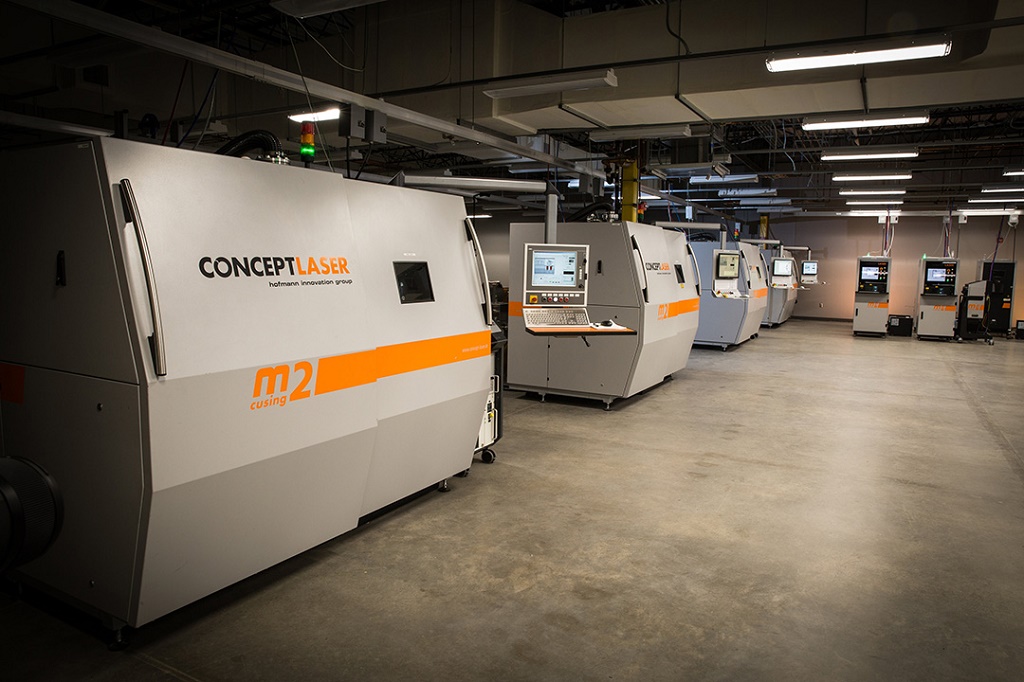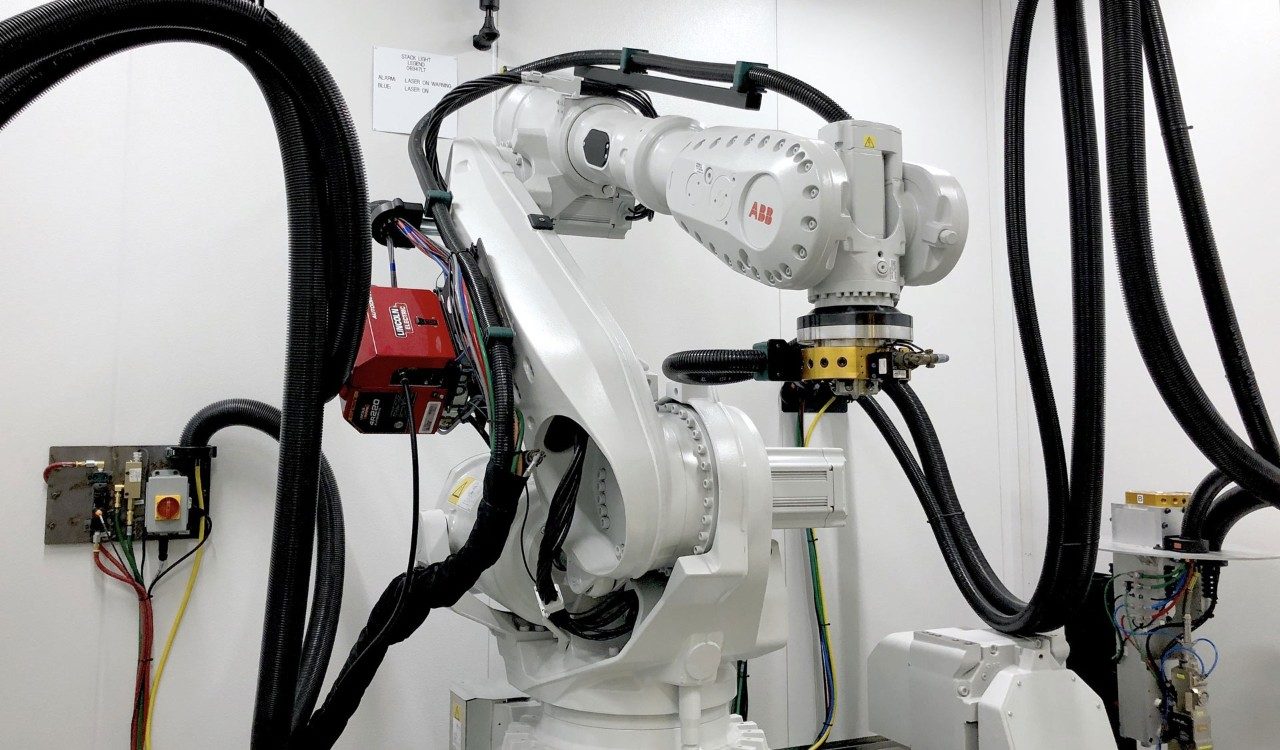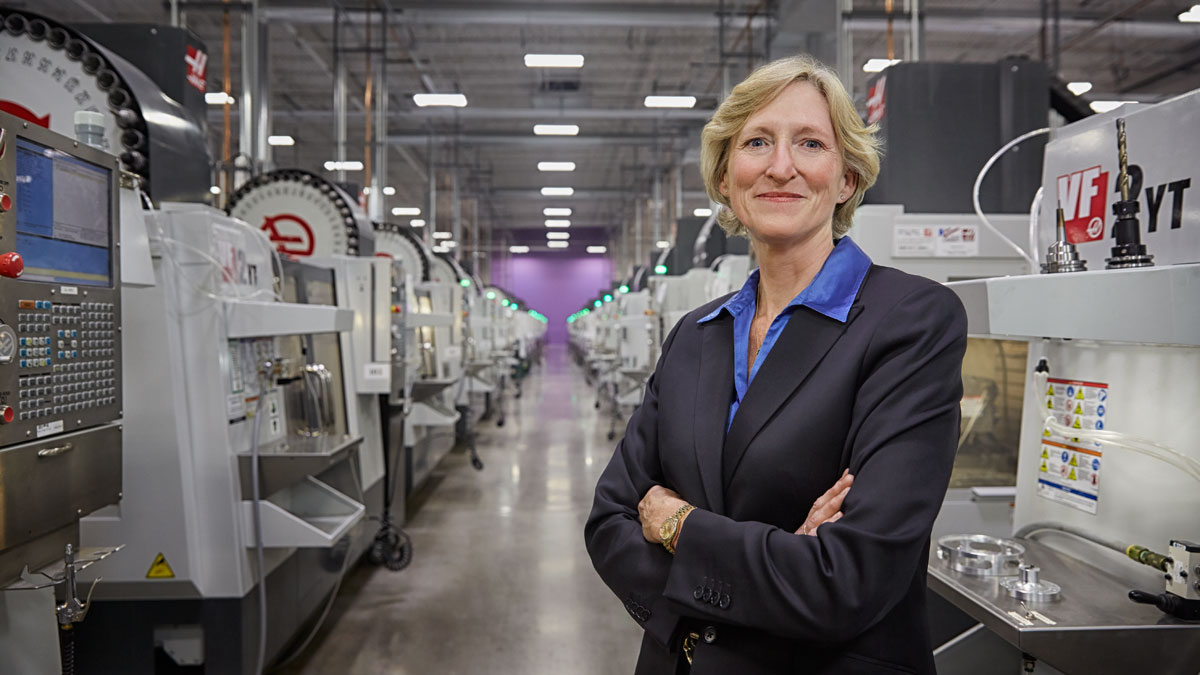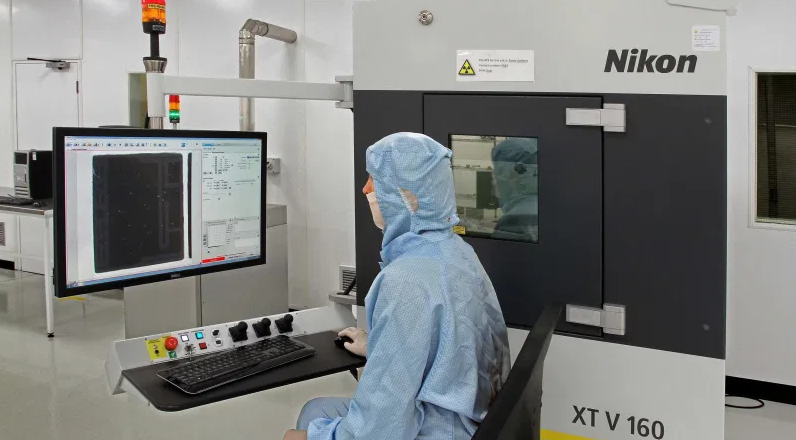At a time when the global manufacturing industry is undergoing major changes due to the ongoing COVID-19 pandemic, emerging technology trends are gaining momentum and accelerating a digital transformation. To better understand the impact and demands of the evolving market, nonprofit organization SME, along with the Association for Manufacturing Technology (AMT) and Advanced Manufacturing International assembled manufacturing experts, industry executives, and thought leaders for a one-day online experience.
Held on October 29, 2020, The Best of Smart Manufacturing Experience (SMX) Virtual Event focused on crucial strategic and workforce issues, along with eight disruptive technologies destined to change the face of manufacturing globally over the next decade, including 3D printing. Experts had the chance to present case studies, panel discussions, and keynote addresses to explore Industry 4.0. While attendees at the event were able to interact with their fellow manufacturing professionals and gather relevant information to succeed under challenging business conditions that are part of today’s global ecosystem.
2020 has turned out to be one of the most challenging years in decades. Seven months after the COVID-19 virus was declared a pandemic worldwide, uncertainty still remains, and during this time, businesses struggled against broken supply chains. As entire industries have begun to rethink how to transform their global supply networks, new technologies have emerged. To highlight how smart manufacturing solutions are disrupting supply chains today, four industry leaders took on these issues during the keynote panel discussion of the day.
Panelists Marilyn Gaska, Logistics and Sustainment Chief Engineer for Lockheed Martin; Joel Neidig, CEO and Co-founder of SImple Blockchain Applications (SIMBA), and Vicki Holt, CEO of Protolabs, discussed the biggest technology challenges impacting the supply chain, how to prioritize these challenges, and the security concerns of data sharing.
According to the experts, as companies move towards adopting digital manufacturing solutions to deal with broken supply chains, they also need to learn to deal with cybersecurity risks. For example, Gaska described that for Lockheed, cybersecurity has become one of the key areas when working across a supply chain and going digital. Companies should make sure their digital data is secure, she said, especially as they move into distributed supply chains and manufacturing at the point of need.
Similarly, Holt suggested that manufacturers have to deal with a lot of risks as the world is continually facing geopolitical, terrorist, and climate change situations, as well as a pandemic. This has required them to analyze their supply chains and find risk areas that could impact their ability to continue serving customers, requiring them to think about how to fortify supply chains and make them more agile.
In order to succeed here, Holt recommended accelerating development times while reducing costs, and mitigating risks, something smart manufacturing can help with. Blockchain solutions, like the one SIMBA offers its customers, have already proven ideal to mitigate current risk in supply chains by i
Focusing exclusively on AM, the Director at Siemens Additive Manufacturing Network, Robert Meshel, talked about accelerating adoption of the technology for industrial processes and applications. He explained how AM helps businesses deliver a better product to market and improves the ability to operate cost-effectively while leveraging the capacity of the global supply chain in an environmentally friendly way.
Meshel described three major business model needs that are going to emerge in order to leverage the AM ecosystem. The first one is focused on more distributed manufacturing models, especially as the OEM’s and smart companies seek to strengthen their network of suppliers to deliver products and parts locally. Next, Meshel considered a co-creation of ecosystems that will collaborate to build competencies from multiple companies together. Last, businesses need to have full traceability of the workflow and processes, for that, they need to follow a full digital thread, from the point of the design until the part is developed and delivered for use.
The expert also described successful examples to understand the major transformational importance of AM for new business models, and how the industrialization of AM is crucial to extract the potential of the technology. Harnessing the ecosystem is a key to successful AM processes, and that he saw in companies like global sports retailer Decathlon or French fashion house Chanel, both of them taking in the full potential of 3D printing. Chanel, by mass-printing (over one million parts per month) mascara brushes, while Decathlon experienced a boost in its AM capacity, with the number of printers going up from 1 to 40 within a two-year period, and continually finding new areas within the company where 3D printing can strive. Proving that although most companies initially utilize the technology for prototyping, they soon realize that it can fulfill more use cases.
“At Siemens, we are committed to additive manufacturing because we think that it is a great technology that can help us internally within all our operation. It is a technology that we need to invest significantly in, because we believe we are going to see more manufacturing on-demand, and the best way to play this game is to partner to leverage the big ecosystem that is all around. AM is not a unique technology for specific application domains, it is going to grow and cover all aspects in our day to day life,” indicated Meshel.
For Andrew Ramsey, X-Ray computed tomography (CT) specialist at Nikon Metrology, leveraging 3D printing technology is more of an inside job. His talk about CT for AM focused on how specialized imaging systems can produce a full 3D quantitative picture of the internal structure of a complex part. Claiming, experts can look inside an object for defects and inclusions, to accurately measure dimensions, surface areas, volumes, and approximate material densities. This micro-CT information on internal defects can give users confidence in additive manufactured parts.
X-ray CT offers a complete 3D density map of the internal structure of an object, while 3D volume analysis software offers the tools needed to measure, extract surfaces, create surface and volume meshes, and even run simulations, such as heat or fluid flow, and more. Hundreds or even thousands of projection images are taken while the sample is rotated through 360°. Then a CT volume is built from these images and analyzed. Powerful 3D volume analysis software even allows experts to segment CT volumes, for example, to perform an analysis of voids in individual powder grains. Ramsey reflected upon some common AM problems that can be solved with X-Ray CT, like powder residues blocking channels, defects like voids and inclusions, porosity, contamination, and cracking.
“High resolution X-Ray CT is an ideal way to fully inspect additively manufactured parts, by checking the source powder before you can print anything,” said Ramsey. “Checking for the correct printed structure, comparing the design and looking for deviations, looking at defects, voids and inclusions, checking for entrapped powder that hasn’t been flushed out and then doing a full damage analysis of the finished part. You have to make sure that the resolution of your scan can detect small defects that in AM can eventually grow and lead to catastrophic failure.”
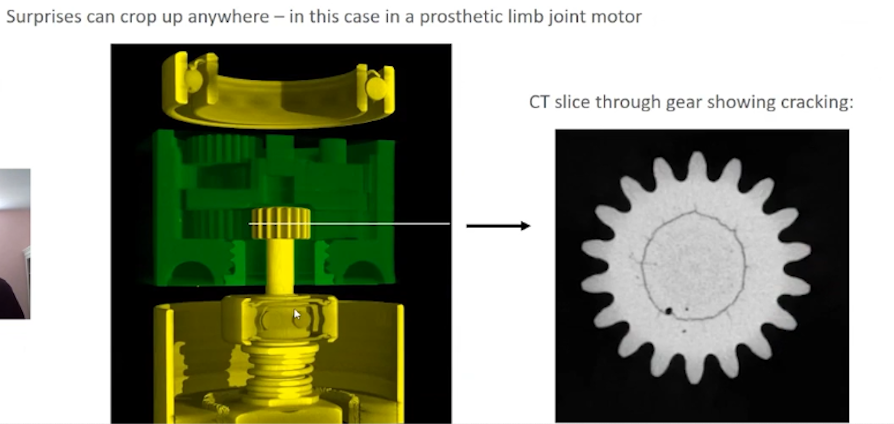
Nikon Metrology’s X-ray CT can detect defects inside AM parts. Image courtesy of Andrew Ramsey/Nikon Metrology
Amid panels, attendees also had the chance to visit the virtual exhibit hall and meet sponsors and interactive stands or connect with industry professionals in the Networking Lounge. The 20 panels that took place during the six-hour event delivered an overall powerful message about the importance of smart manufacturing, today more than ever.
Throughout the day, experts focused on some of the most disruptive technologies available today. Like Oak Ridge National Laboratory (ORNL)’s Chief Manufacturing Officer, Thomas Kurfess, who spoke about integrating hybrid manufacturing processes via the digital thread. The combination of additive and subtractive technology can help democratize state of the art capabilities, he said, as the technology adds value, augments the workforce, and lowers materials costs. Kurfess anticipated hybrid machines will eventually replace additive systems, as they are more accurate in tooling and can lead efforts to make parts more effectively.

Thomas Kurfess pictured with MedUSA, a next generation advanced manufacturing machine that combines additive, subtractive and tooling applications. Image courtesy of Oak Ridge National Laboratory
The event truly showcased expertise on many aspects of smart manufacturing, focusing on how innovation and technological advancement are dramatically reshaping how businesses produce, from empowering the workforce to cybersecurity. Audiences that missed The Best of SMX virtual event can still access the panels through the SmartManufacturingExperience.com website.
Subscribe to Our Email Newsletter
Stay up-to-date on all the latest news from the 3D printing industry and receive information and offers from third party vendors.
You May Also Like
Further Understanding of 3D Printing Design at ADDITIV Design World
ADDITIV is back once again! This time, the virtual platform for additive manufacturing will be holding the first-ever edition of ADDITIV Design World on May 23rd from 9:00 AM –...
3D Printer Maker EVO-tech Reborn as NEVO3D — Once More With Feeling
EVO-tech was a 3D printing service and original equipment manufacturer established in 2013 and based in Schörfling am Attersee, Austria. The company produced high-quality material extrusion systems featuring linear bearings,...
3D Systems Brings 3D Printed PEEK Cranial Implant to the U.S. with FDA Clearance
For more than 10 years, 3D Systems (NYSE:DDD) has worked hand-in-hand with surgeons to plan over 150,000 patient-specific cases, and develop more than two million instruments and implants from its...
CDFAM Returns to Berlin for Second Annual Symposium
The second CDFAM Computational Design Symposium is scheduled for May 7-8, 2024, in Berlin, and will convene leading experts in computational design across all scales. Building upon the first event...


